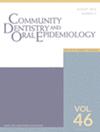The effectiveness of medical nurses in treating children with silver diamine fluoride in a school-based caries prevention program
Abstract
Background
The sustainability of school-based oral health programs depends on the utilization of effective, efficient treatments and the availability of a trained clinical workforce. The objective of this study was to determine whether registered nurses are comparable to dental hygienists in the application and effectiveness of silver diamine fluoride (SDF) and fluoride varnish (FV) for the prevention of dental caries.
Methods
CariedAway was a school-based study of SDF and FV versus dental sealants and atraumatic restorations. Within the SDF + FV arm, participants were treated by either a licensed dental hygienist or a registered nurse, both under the supervision of a paediatric dentist. Although initial treatment assignment in CariedAway was randomized, assignment to provider was not. The proportion of children who remained caries free after 2 years was assessed for non-inferiority using two-group proportion tests, adjusting for the clustering effect of schools.
Results
A total of 417 children with no untreated caries at baseline were analysed including 298 treated by hygienists and 119 by nurses. The proportion of children who remained caries free after 2 years was 0.81 and 0.80 for those treated by hygienists and nurses, respectively, for a difference of 0.01 (95% CI = −0.07, 0.098) and within the pre-determined non-inferiority margin.
Conclusions
Nurses may be effective in treating children with silver diamine fluoride and other fluoride varnishes in school-based oral health programs.

 求助内容:
求助内容: 应助结果提醒方式:
应助结果提醒方式:


